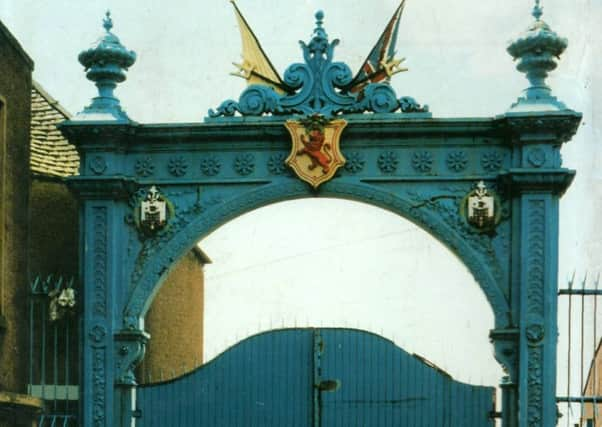Grahamston gates '“ the biggest in the world


Occupying most of the Meadows, the International Exhibition of Industry, Science and Art showcased the new wonders of the world of technology drawing tens of thousands to visit the huge exhibition hall lit by a dazzling array of 3200 electric lights.
The opening on May 6, 1886, was performed by Queen Victoria’s grandson Prince Albert Victor and the exhibition lasted for five months before the vast array of exhibits (over 20,000 individual items) and the buildings were removed. Incidentally, the Prince was something of a ‘badly behaved boy’ by all accounts and it was even suggested that he was Jack the Ripper – but that’s another story! His royal granny visited later in the year.
Advertisement
Hide AdAdvertisement
Hide AdThe outstanding feature of the exhibition was the re-creation of a 17th century Edinburgh street with reproductions of lost buildings like the famous Netherbow Port. Because permanent building was not allowed in the Meadows everything had to be removed and very little now survives to remind us of the great event. There is a whalebone arch in the park and entrance pillars with unicorns and, of course, the great blue gates which today stand outside the Carron Phoenix factory.
Weighing in at 20 tons and measuring 26 by 20 feet they were said to be the biggest iron gates in the world, designed and cast not at Carron but in W T Mitchell’s Grahamston Foundry.
The foundry had been operating for less than 20 years before this particular commission and we can be sure that the firm’s reputation soared when people saw the intricate decoration of the triumphal arch which included the Royal Coat of Arms and the arms of the City of Edinburgh as well as urns, finials and columns.
A second, near identical, arch was cast around the same time and I’m grateful to Raymond Jackson, who tells me that it was located in the Peoples Park in Grimbsby until 1943.
Advertisement
Hide AdAdvertisement
Hide AdI’m not sure which came first – maybe the Grimsby folk visited Edinburgh and were impressed or possibly the Festival organisers had been to Humberside looking for bright ideas!
After the Festival the Edinburgh gates were dismantled and returned to Grahamston where they stood at the end of Gowan Avenue until 2002. The foundry had closed a couple of years earlier and the new owners of the site were not interested in their historic acquisition.
Enter Roger Clark, the managing director of Carron Phoenix and a great admirer of the skills of Falkirk foundry men. He arranged for the arch to be dismantled and beautifully restored before its re-erection on the banks of the Carron near the Phoenix factory.
It is now ‘B’ listed by Historic Scotland and the plaque on the wall tells us that it is there as a tribute to those glory days when Falkirk led the world in cast iron design. Sadly today the world seems to lead Falkirk as the recent events at Carron Phoenix underline.
Advertisement
Hide AdAdvertisement
Hide AdDespite the excellence of their products which are in high demand and the skills of the workforce, it seems that global capitalism will have its way. The loss of manufacturing capacity would be a huge blow to the work force and to the whole community.
I hope that those who can influence the outcome will remember the old motto of Carron Ironworks ‘Esto Perpetua’ and stand strong like those mighty gates which have survived through changing and challenging times for well over a century.